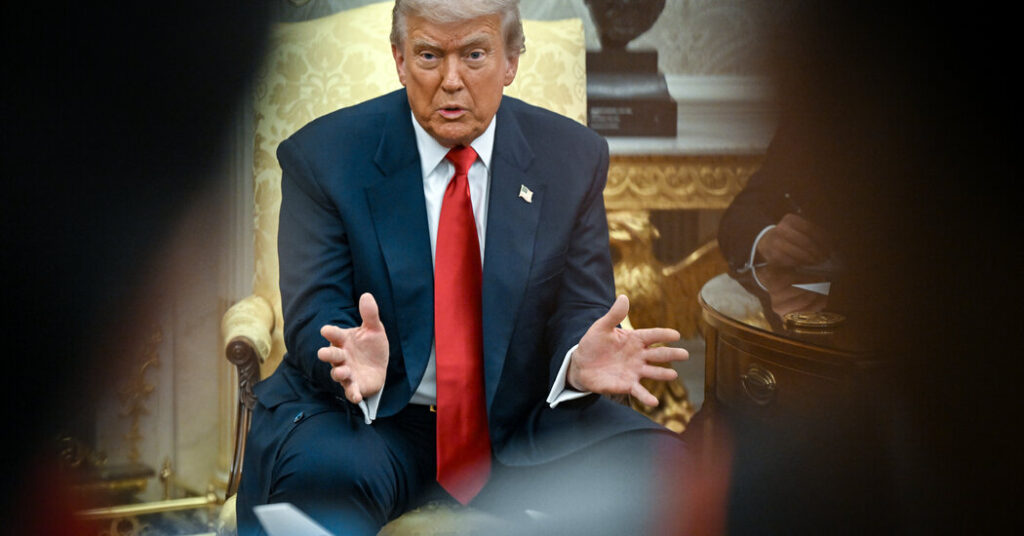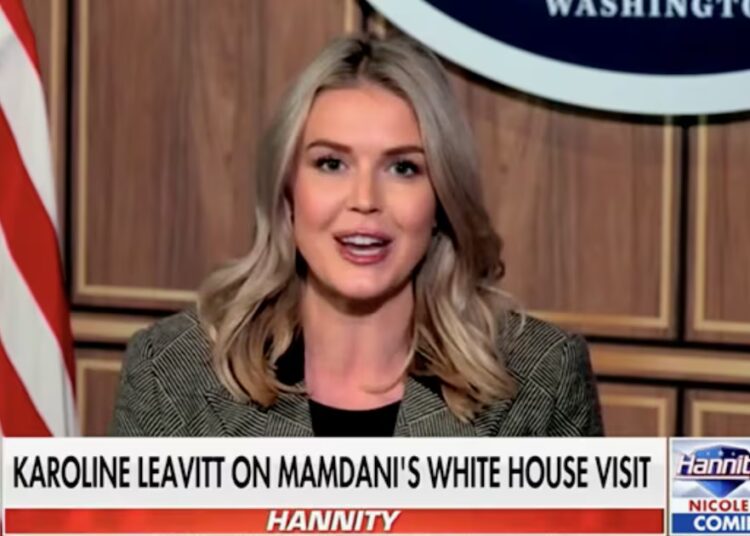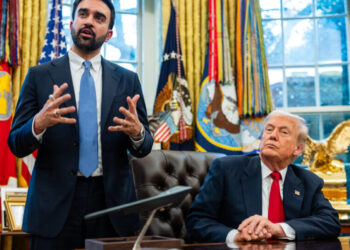President Vladimir V. Putin of Russia said a 28-point plan that President Trump is pressuring Ukraine to accept could “serve as a foundation for a final peace agreement.”
It would also be a big victory for the Russian leader, placing limits on Western power, forcing Ukraine to cede territory it hasn’t lost on the battlefield, restricting the size of its military and ruling out NATO membership for Ukraine.
President Volodymyr Zelensky of Ukraine, whom Mr. Trump has given until Thursday to accept the plan, warned that his country faced “one of the most difficult moments in its history.”
What is in the plan?
It is a U.S.-backed peace proposal to end Russia’s war in Ukraine that would have Ukraine capitulate on most of Mr. Putin’s demands.
There are almost no concessions from Moscow in exchange. The plan does drop an earlier, far-fetched demand by Mr. Putin and his negotiators that Ukraine withdraw troops from the entire four regions that Russia “annexed” in 2022. Kyiv still controls large sections of three of them.
The plan was formed at the end of October by Mr. Putin’s special envoy, Kirill Dmitriev, and Steve Witkoff, Mr. Trump’s special envoy.
“We feel the Russian position is really being heard,” Mr. Dmitriev told Axios this week.
What would Russia get?
The plan would achieve most of Mr. Putin’s goals. Under the proposal, Ukraine would emerge as a severely weakened neutral state with vague security guarantees from its Western allies and significant limits on its ability to defend itself.
The Donetsk and Luhansk regions, along with Crimea, would be recognized as de facto Russian. Ukraine would withdraw from the part of Donetsk that it controls. Russia would keep the parts of the Kherson and Zaporizhzhia regions it occupies.
Mr. Putin would also achieve limits on Western power. The plan would rule out the deployment of NATO troops in Ukraine and all further expansion of that military alliance.
The strength of Ukraine’s military would be capped. All parties would receive amnesty for actions during the war.
Moscow would also receive gradual relief from sanctions and be reintegrated into global trade at a time when its economy is at its weakest point since Russia’s 2022 invasion of Ukraine. Moscow would be invited to rejoin the Group of 8 nations and, ultimately, sign U.S. economic cooperation agreements.
What would Ukraine get?
Ukraine would gain little other than a halt to the war.
The plan would give Kyiv vague security guarantees. If Russia were to invade again, the plan calls for an unspecified decisive and coordinated military response, and the reinstatement of sanctions against Russia.
Kyiv is allowed to seek membership in the European Union under the plan. Also in the plan: investing $100 billion of frozen Russian assets in a U.S.-led effort to rebuild Ukraine, matched by an equal sum from Europe.
Russia would withdraw from the small amount of territory it holds in the Kharkiv and Sumy regions.
Ukraine could also get political instability. The plan demands elections be held within 100 days, potentially ushering out Mr. Zelensky, a longstanding goal of Mr. Putin’s.
What has Russia said?
At a meeting with his security council on Friday, Mr. Putin said he had received the text of the plan.
“However, it is not being discussed in detail with us,” the Russian leader said. He said this was probably because Washington had yet to secure agreements from Ukraine and its European backers.
Mr. Putin said Russia would be content to continue taking Ukrainian cities by force, “perhaps not as quickly as we would prefer, but inevitably.”
But he said that Moscow was also ready for negotiations, which would require “substantive and meaningful discussion of all aspects of the proposed plan.”
What was Ukraine’s response?
Mr. Zelensky said on Friday in an address to the Ukrainian people that the time had potentially come to choose between losing their dignity or U.S. support.
The Ukrainian leader vowed to propose alternatives to the plan in a “constructive search for solutions.” He said he would not give Russia any reason to say that Ukraine wasn’t ready for diplomacy or didn’t want peace.
He said Ukraine was facing a choice between the difficult 28 points and an extraordinarily hard winter.
What are the incentives for peace?
The situation on the battlefield is increasingly perilous for the Ukrainians, who have been losing territory in the east. It is unclear how long Ukraine can hold out against an enemy with a vast domestic weapons industry and a population that is nearly four times larger.
Russia is facing its own economic pressures, owing in part to new U.S. sanctions on Russian oil producers that have further reduced hydrocarbon income and strained the wartime budget.
The plan involves large concessions by the United States and its Western allies that the Biden administration would not have abided.
Mr. Putin may seek to secure those wins, realizing that the winds could change in Washington.
Paul Sonne is an international correspondent, focusing on Russia and the varied impacts of President Vladimir V. Putin’s domestic and foreign policies, with a focus on the war against Ukraine.
The post What Is Trump’s 28-Point Plan to End Russia’s War in Ukraine? appeared first on New York Times.




